Introduction
The Poseidon C-3 missile, a two-stage solid-propellant submarine-launched ballistic missile (SLBM), was developed to launch from the US Navy’s submerged submarines. It followed the Polaris A-2 and A-3 in the lineup of the US Navy’s SLBMs. With a range of 2500 nautical miles (4630 km), it had the same range as the Polaris A-3. However, it weighed significantly more, coming in at 29,000 kg and It could deliver a larger payload with greater accuracy.
This missile, designated UGM-73, was engineered to fit into the existing Polaris tubes with minimal modification.
| Poseidon C-3 SPECIFICATIONS | |
|---|---|
| Length: | 34 ft (10.39 m) |
| Diameter: | 6 ft. 2 in (1.88 m) |
| Weight: | 64,000 Ibs (29,030 kg) |
| Speed: | Supersonic; |
| Range: | 1,800 n.miles (7,500 km) - 3,000 n.miles (5,550 km) |
| Accuracy: | 1475 ft (450 m) C.E.P. |
| Propulsion: | 2-stage solid propellant |
| Guidance: | Inertial |
| Warhead: | 10-14 MIRV W-68 nuclear (50 KT) |
| Main contractor: | Lockheed Missile and Space Coorporation (now Lockheed Martin Space Systems, Missile and Space Operations, Sunnyvale, California) |
One key feature that set the Poseidon apart was its capability to carry Multiple Independently Targeted Reentry Vehicles (MIRVs). This was a first in the world of strategic missiles. Up to 14 warheads could be fitted onto a single Poseidon missile. However, adding more warheads meant a reduced range compared to the Polaris A-3.
The MIRV technology was later adopted for subsequent U.S. Intercontinental Ballistic Missiles (ICBMs) and Submarine-Launched Ballistic Missiles (SLBMs). This was mainly to counter Soviet Anti-Ballistic Missile (ABM) systems and cover more targets.
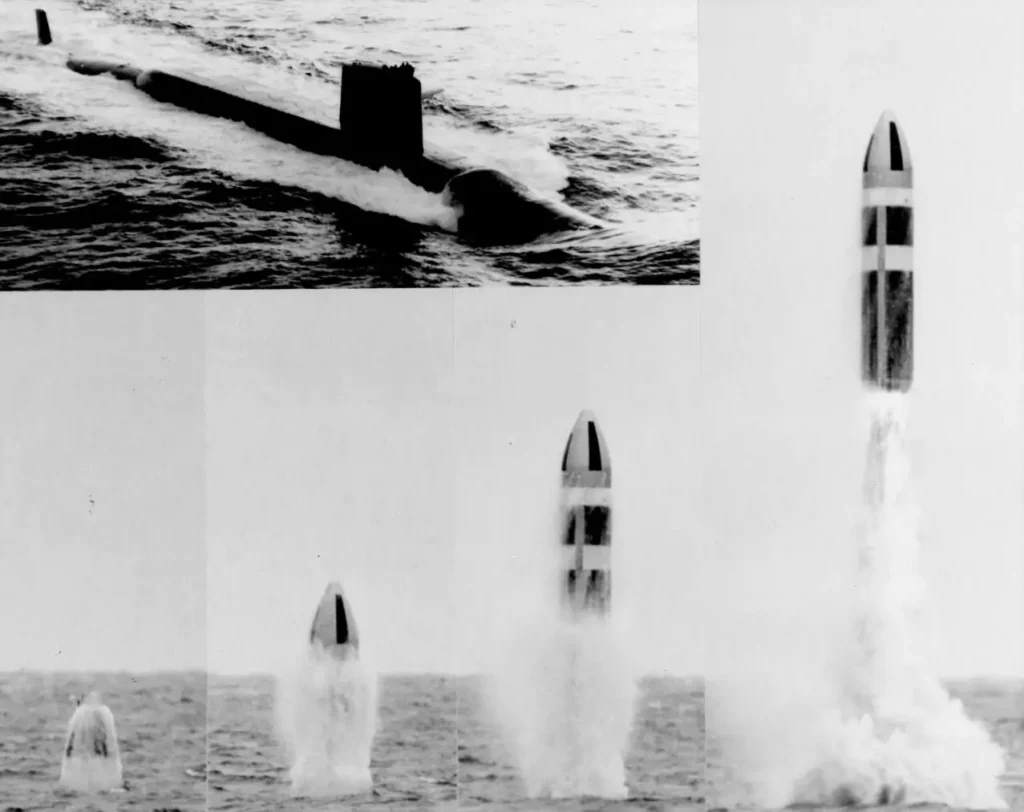
Being the first MIRVed SLBM to be deployed, the Poseidon marked a substantial upgrade in the United States’ capabilities. Specifically, its deployment led to a 100-fold increase in the capability of the United States’ SLBM force.
For a considerable time, the Poseidon served as the backbone of the US Navy’s strategic missile force. But technology marches on. In 1979, the Poseidon was succeeded by the Trident I C-4 missile, initially named EXPO for “extended-range Poseidon.” The Trident I had about twice the range of the Poseidon, indicating a new chapter in the evolution of U.S. naval strategic capabilities.
Description
Design
The Poseidon C-3 missile design leveraged advancements in missile tube technology, effectively utilizing the full volume inherent in the launch tubes of SSBNs. These tubes were initially overdesigned, allowing for future missiles to exploit their full capabilities.
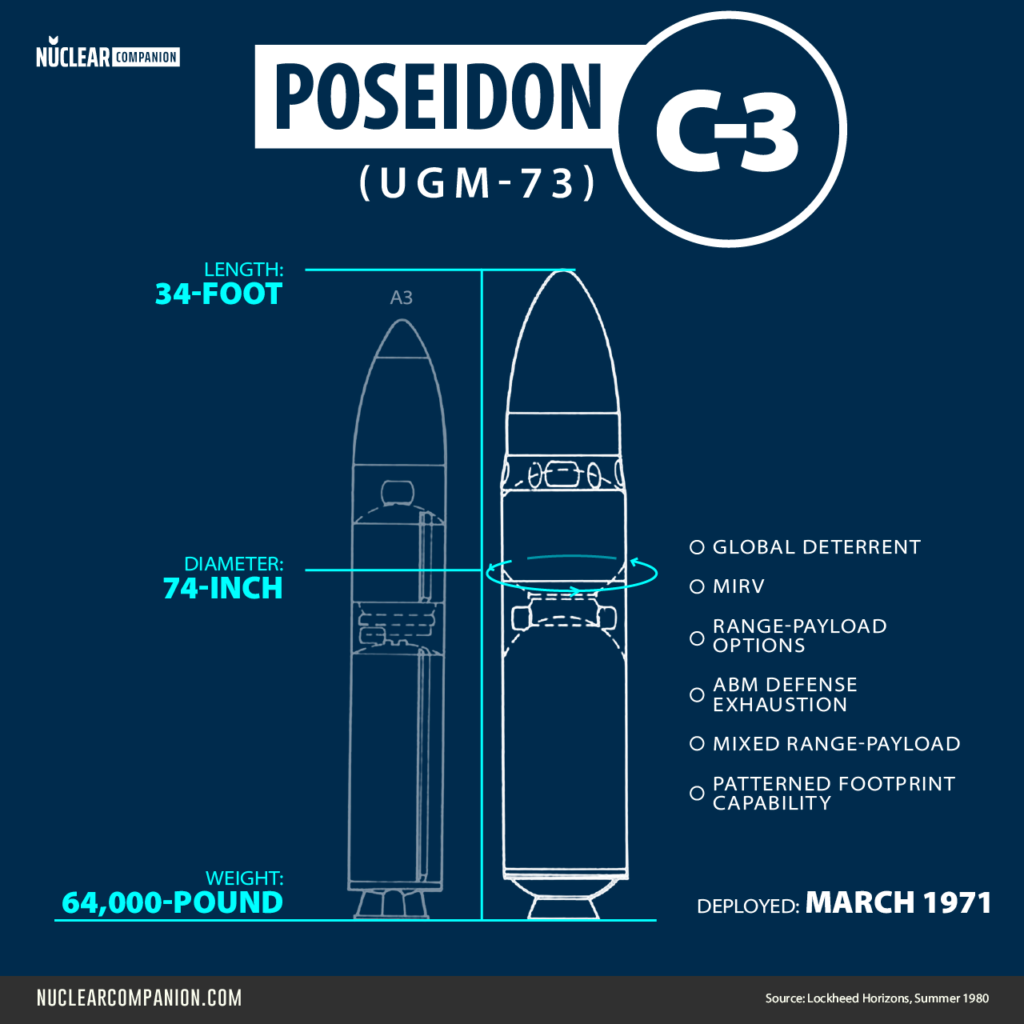
The Poseidon did precisely that, with a significant increase in diameter to 6 feet 2 inches, almost twice the weight, and greater length compared to its predecessor, the Polaris. This enhancement became known as the B-3 concept, which enabled the missile to carry multiple Mk 12 reentry bodies or even the larger Mk 17, as well as numerous smaller Mk 3 MIRVs.
The missile’s increased diameter brought new opportunities, from greater range and larger warheads to refined guidance systems designed for better mission effectiveness. Interestingly, due to projections on antisubmarine warfare and forward-based tender support, the focus was not on further increasing the missile’s range.
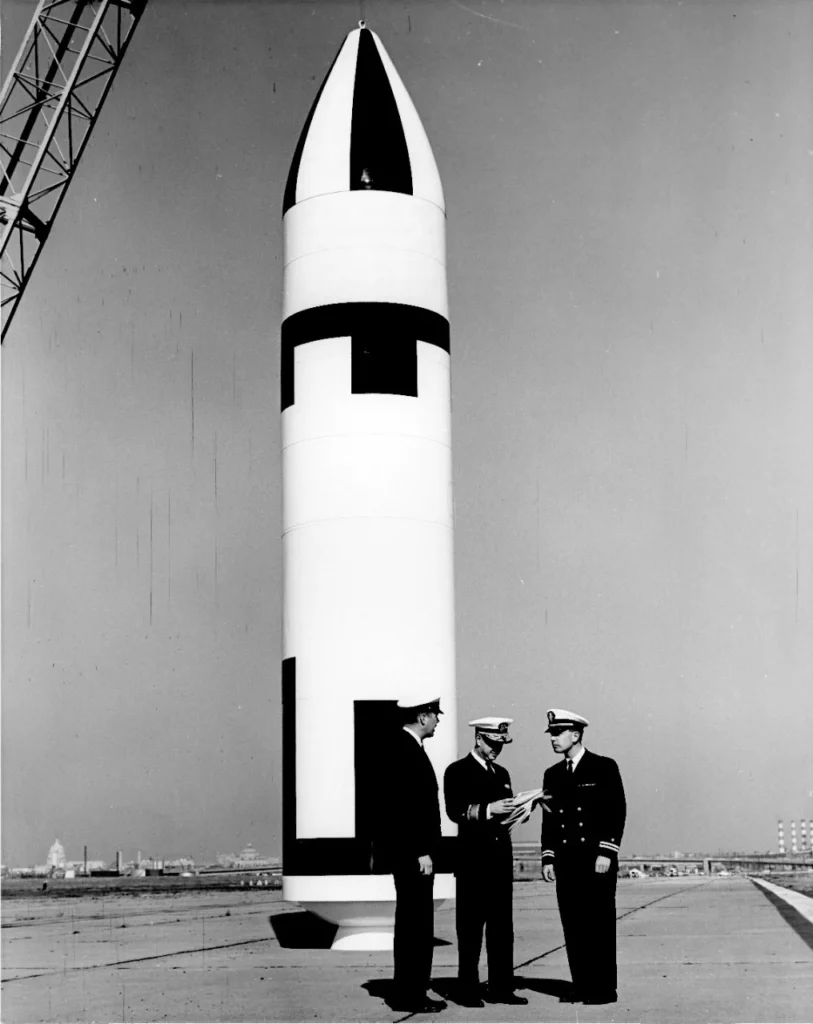
Instead, the development centered on achieving payload flexibility and improved defense penetration capabilities. While some structural weight savings and improved propellant performance contributed to its advanced payload capability, much of it was derived simply from Poseidon’s larger size.
An enhanced fire control system known as Mk 88, produced by the General Electric Company, was developed to complement the Poseidon system. It interfaced with a later version of the Rockwell SINS (Ships Inertial Navigation System), the missile, and the launcher.
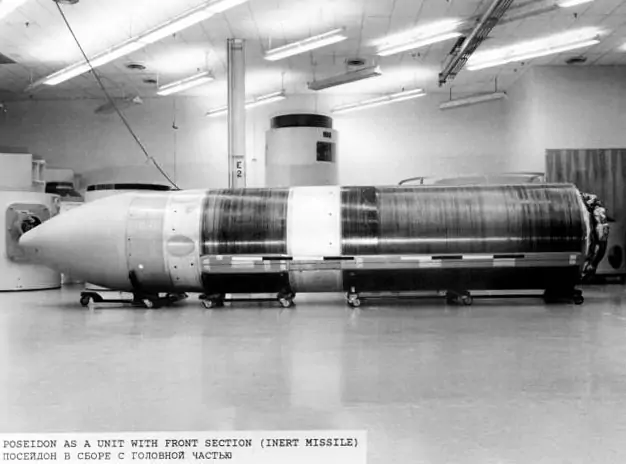
The Mk 88 performed various functions such as target calculations, data insertion into the guidance system, and test and checkout launch order and sequence control, contributing to the overall efficacy of the Poseidon C-3 missile system.
Guidance
The Poseidon Mk. 3 guidance system was a traditional stable platform design that evolved from the Polaris Mk. 2. This new system thanks to more computational power doubled the accuracy of earlier weapons. Additionally, it was ‘hardened’ to withstand radiation from Anti-Ballistic Missile (ABM) nuclear systems, making it more resilient in challenging environments.
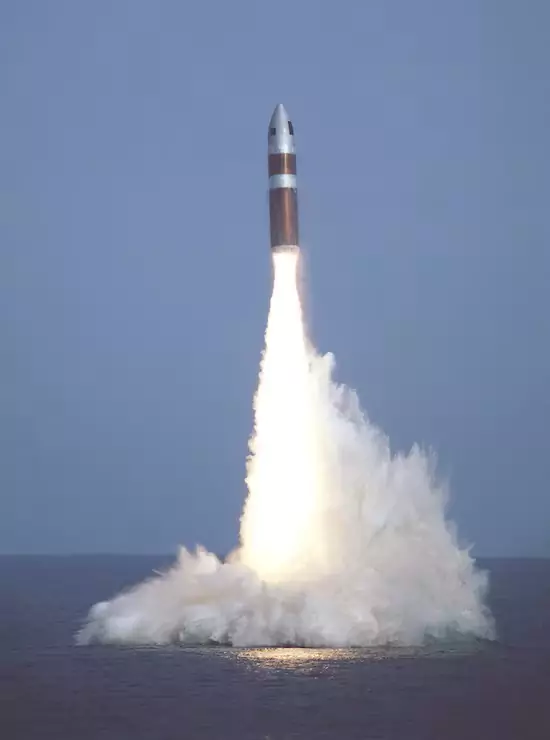
Propulsion
The development of the Poseidon C-3’s propulsion system was a collaborative effort between Hercules, Inc. and Thiokol Chemical Corp. Operating as a joint venture, Hercules was responsible for the entire second stage and the fiberglass casing for the first stage. Thiokol, on the other hand, provided the propellant for the first stage. Aerojet, the company that developed the propulsion for the Polaris, also placed a bid but lost due to cost considerations.
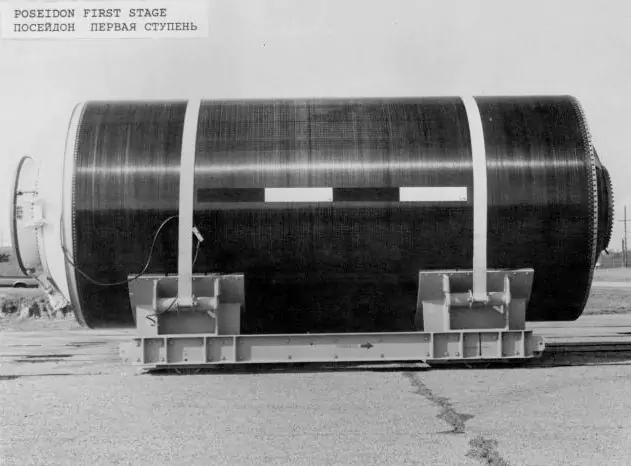
The Poseidon C-3 represented a conservative technological approach in comparison to its predecessor, the Polaris A3. While the Polaris A3 was seen as a great technological leap in propulsion, Poseidon’s innovation was more restrained.
Both the first and second stages of the Poseidon C-3 employed fiberglass cases. The first stage used what is termed a ‘composite modified double base’ propellant, the same as in the Polaris A3. The second-stage propellant was a double base.
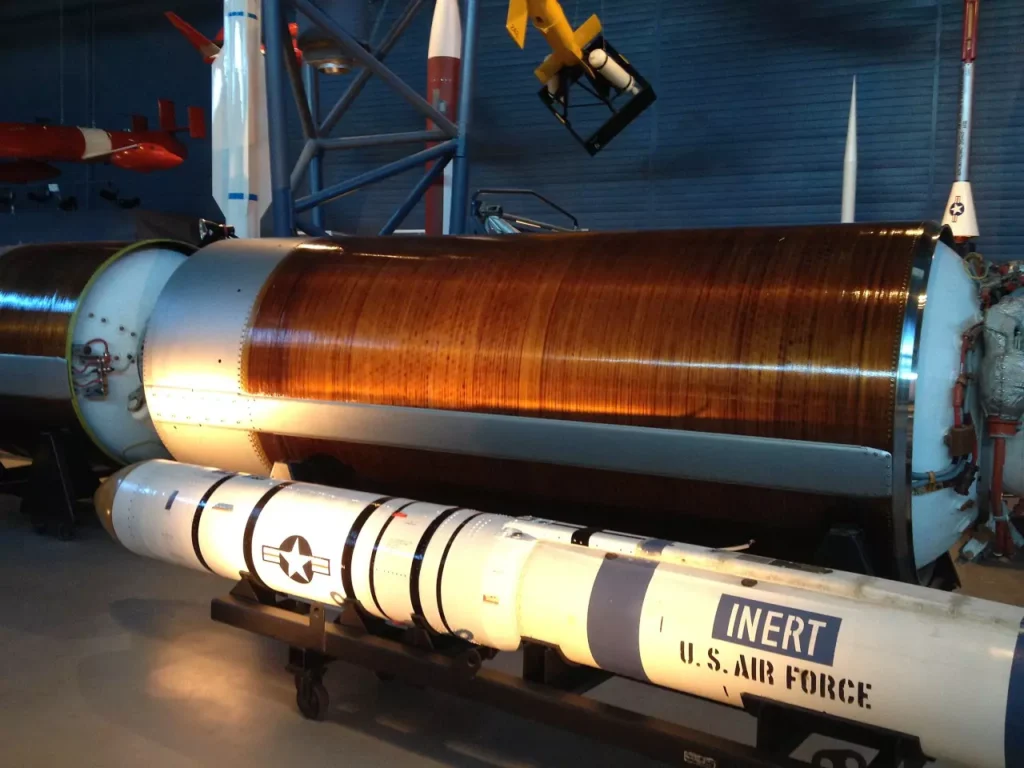
One distinctive feature of the C-3 rocket motors was the introduction of single movable nozzles for thrust vector control in both stages. Actuated by hydraulic pistons pressurized by gas generators, these nozzles provided both directional control and roll control. This feature marked the first time single movable nozzles were used in the Fleet Ballistic Missile (FBM) program.
Payload & Warheads
The Poseidon C-3 missile stood out for its increased nuclear payload capability, enabling a more diversified attack strategy. A single Poseidon missile could carry up to 14 Mk. 3 Multiple Independently Targeted Reentry Vehicles (MIRVs) equipped with W-68 50 Kt warheads. Although the Strategic Arms Reduction Treaty (START) usually declared a payload of 10 Reentry Vehicles (RVs), the missile had a Post Boost Vehicle (PBV) that could carry up to 14 RVs.
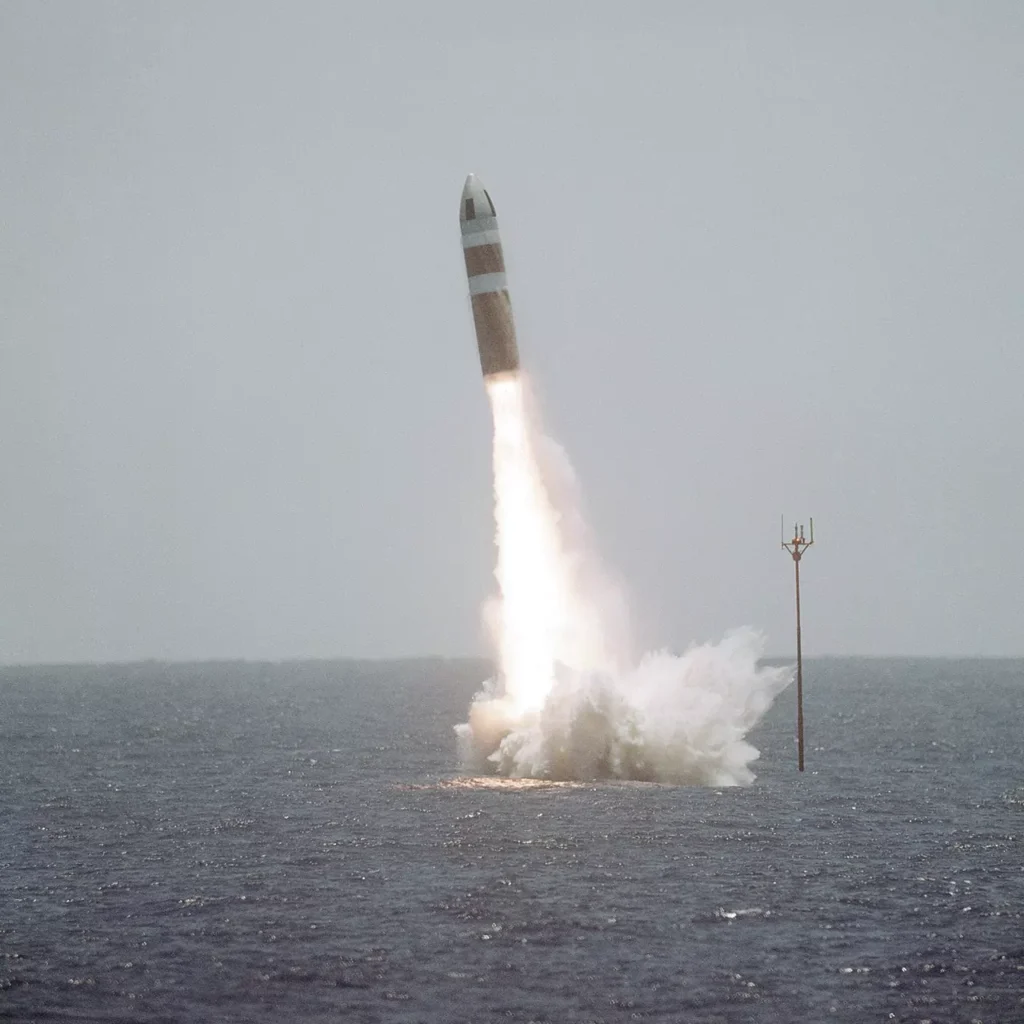
The Mk. 3 RVs were preferred due to their smaller size, which enabled a larger number to be carried. This was viewed as a way to guarantee the retaliation mission against even improved Anti-Ballistic Missile (ABM) defenses. It also eliminated the need to utilize reentry bodies designed for Air Force use, providing a focused approach for naval applications.
Unlike the Polaris A3, the Poseidon C-3 had a unique second-stage flight mechanism. During this phase, the equipment section, containing both the guidance system and re-entry bodies, would separate from the booster. This section was equipped with a solid-propellant gas generator and steering capabilities. These features allowed the guidance system to maneuver the equipment section and eject RVs into ballistic trajectories toward individual target points.
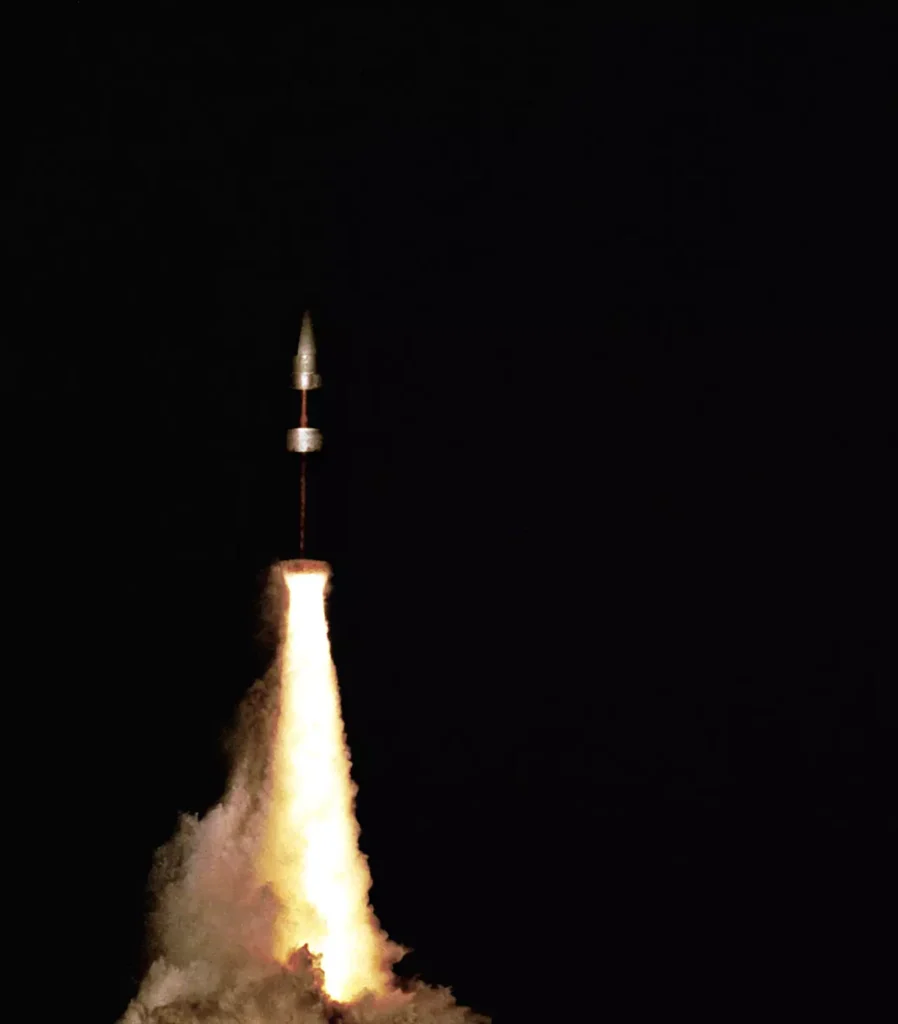
The throw weight of the Poseidon C-3 was declared to be 2,000 in 1991, and its Circular Error of Probability (CEP) stood at 1,500 feet (450 meters), marking an almost two-fold accuracy improvement over the Polaris missiles.
When it came to range, the Poseidon C-3 was quite adaptable. Carrying the maximum load of 14 warheads limited its range to about 1,800 miles. However, reducing the warhead count could extend its range up to a maximum of 3,000 miles.
Specifically, a configuration of 10 RVs allowed for a range of 2,500 nautical miles and 150 nautical miles crossrange. Reducing the RVs to six extended the maximum range to 3,000 nautical miles with a crossrange of 300 nautical miles.
For more technical details about this missile, please visit our Poseidon C-3 Missile Technical Specification article.
Development
Origins and Early Development
The development of the Poseidon C-3 missile began as a result of multiple studies into the Polaris A-3 and the Lafayette class submarines. These studies revealed the potential for greater accuracy and range, as well as the ability to fire missiles without tube liners. In November 1963, this led the U.S. Navy to authorize the creation of a new Submarine-Launched Ballistic Missile (SLBM) initially termed the B-3.
The original intent behind the B-3 program was to develop a missile with extended range. However, a significant design alteration was made in November 1965: the inclusion of Multiple Independently Targetable Re-entry Vehicles (MIRVs). This design feature was added to enhance the missile’s capability to penetrate enemy Anti-Ballistic Missile (ABM) defenses.
Poseidon
President Lyndon B. Johnson officially announced the development of the missile, renamed the Poseidon C-3, on January 18, 1965. Development gained momentum, and by October 1965, work began on a missile with a range of 4,030 miles and twice the payload of the Polaris A-3. The project definition was complete by April, and two months later, presidential approval was secured for its development.
The Department of Defense (DOD) accelerated the project in 1966. During development, the missile’s range was revised to match that of the Polaris A-3.
Testing
The first flight model was launched from Cape Kennedy, Florida, on August 16, 1968. This was followed by the first full test of the weapons system, which occurred during the 14th launch in December 1969. The first phase of the testing program concluded on June 29, 1970, after the 20th flight. Out of 20 test launches, the Navy deemed 14 successful. The first launch from a submerged submarine took place on August 3, 1970, from the USS James Madison.
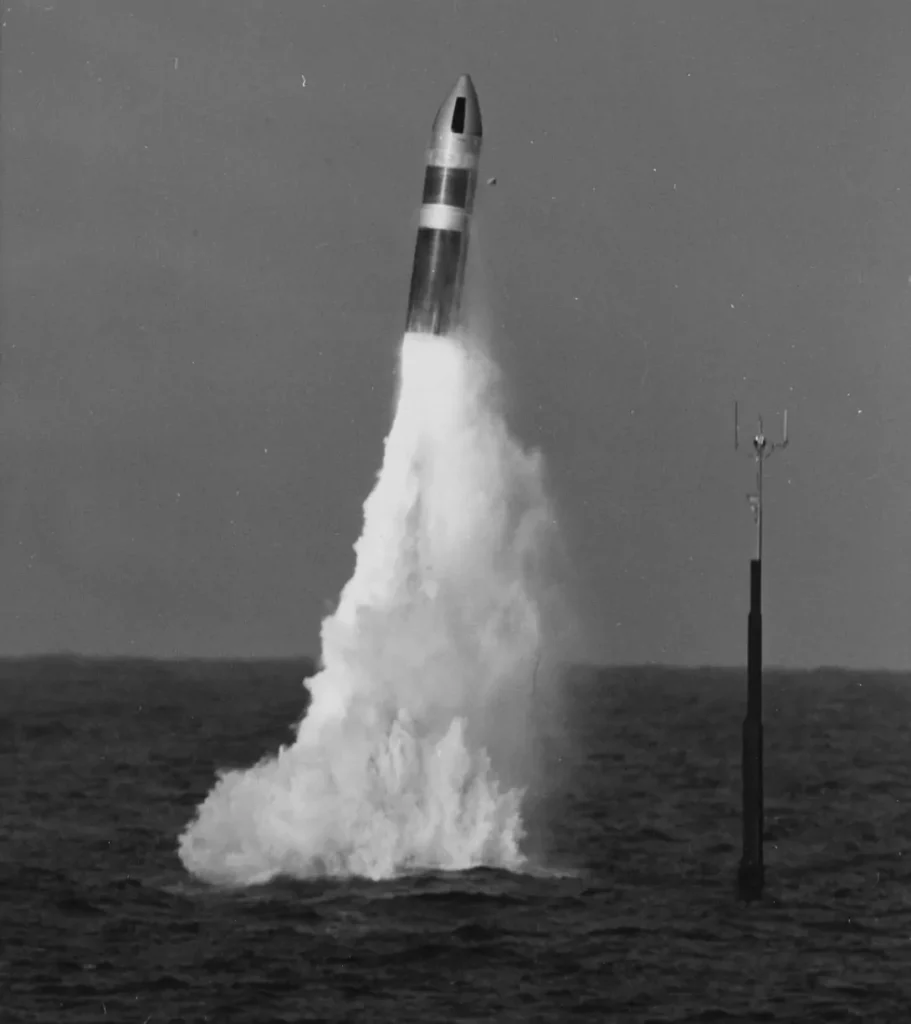
Simultaneously, work was initiated on the Mk 88 fire control system in 1965. The first prototype of this essential component was delivered by General Electric (GE) in 1968. Development flight testing officially concluded in June 1970, thereby marking a milestone in the Poseidon C-3’s journey from concept to a deployable weapons system.
Operative Service
Initial Deployment
The Poseidon C-3 missile became operational on March 31, 1971, with its first deployment on the USS James Madison from Charleston, South Carolina. This marked the start of the missile’s integration into the Navy’s Fleet Ballistic Missile (FBM) force. By September 1974, all 31 Lafayette class submarines were equipped with Poseidon missiles, which was a significant feat given the relatively minor work required for conversion.
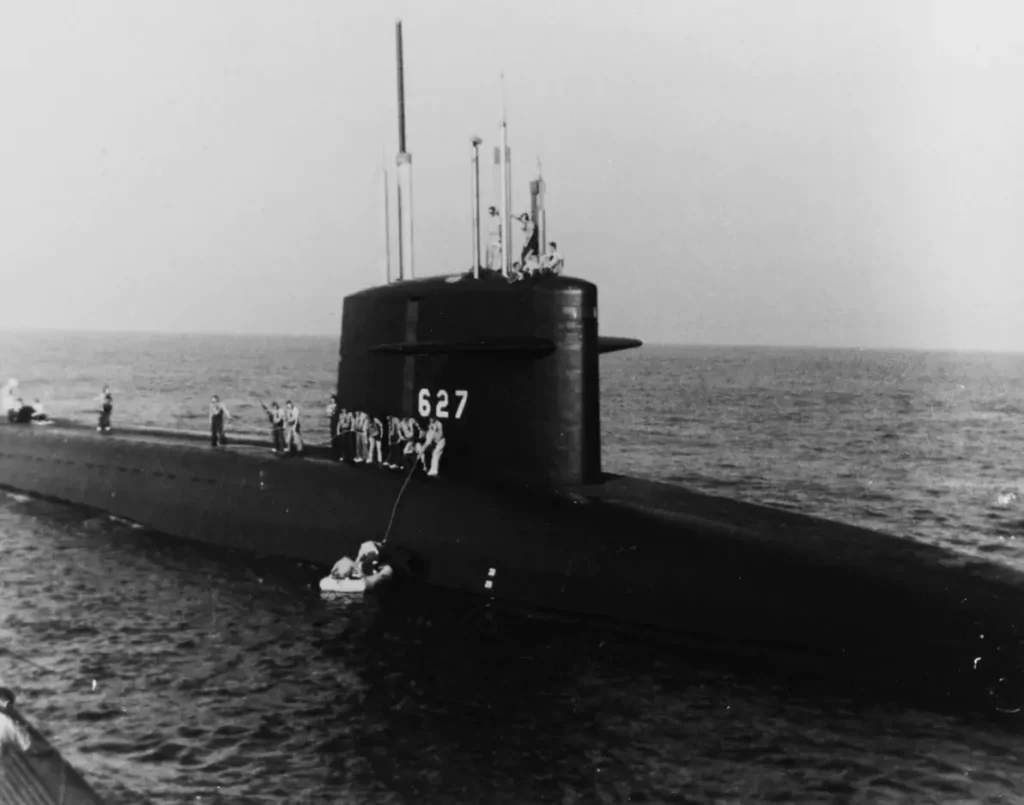
The retrofitting process had actually started in February 1969. The Navy planned to finish the conversion program by mid-1977. However, by March 1974, 20 submarines were already retrofitted and deployed, with six more undergoing conversion. Submarines of the Ten Ethan Allen and George Washington class were not eligible for Poseidon upgrades due to incompatible tube liners.
Operational reliability came under scrutiny in 1972 and 1973 when test programs and deployments faced multiple setbacks. These ranged from quality control issues in small electronic parts to defective firing units. As a result, a retrofit modification program was initiated in 1973. The deployment of these modified missiles began with the 21st Lafayette submarine conversion in 1974.
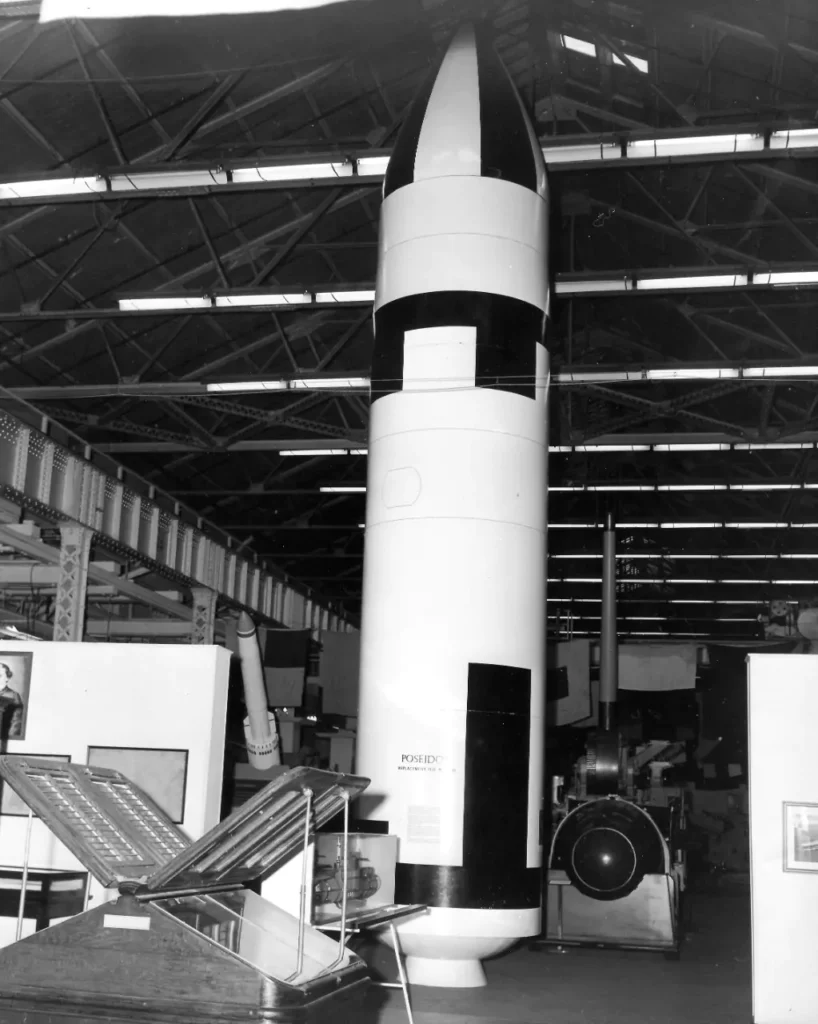
Despite the advancements, the missile never achieved its intended range of 4,030 miles. To address this vulnerability, development began in 1969 on a longer-range missile, known as the EXtended range Poseidon, which later evolved into the Trident I SLBM. Deployment of the Trident began in October 1979 on twelve Lafayette class submarines.
1980s
In 1984, Poseidon’s role began to diminish as the Navy started converting the Lafayette class submarines to accommodate the newer Trident I (C-4) SLBMs. This conversion led to a reduction in deployed Poseidon missiles, numbering 304 by January 1, 1985.
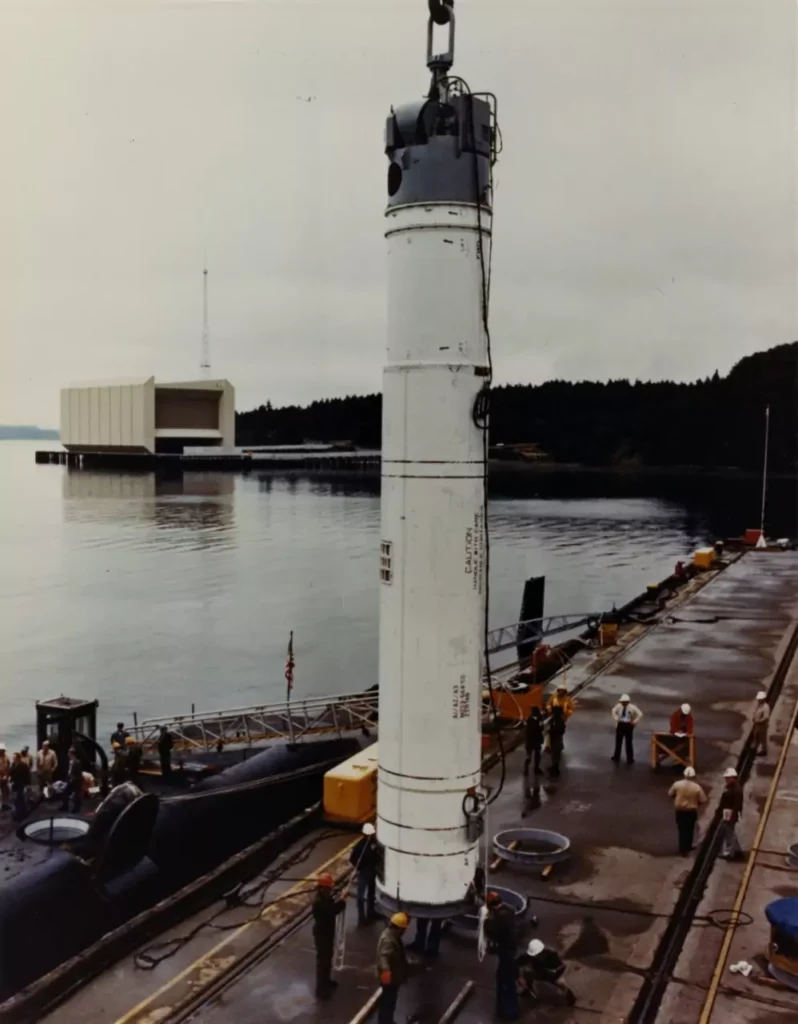
Regarding international arms control, the December 1987 U.S.-Soviet summit negotiations counted each Poseidon as carrying ten MIRVs. This stipulation led the Reagan administration to delay the retirement of Poseidon-armed Lafayette-class submarines to maintain the number of MIRVed missile launchers above the limits of the 1979 SALT II agreement, which was never ratified but informally observed.
Check Poseidon C-3 Missile Deployment (1971-1991) for more details about the missile deployment.
The 1990s and decommission
By 1991, Poseidon’s presence had dwindled to 10 operational boats carrying 160 missiles. The last patrols were conducted by the USS Kamehameha and USS Ulysses S. Grant in 1991. Poseidon missiles were completely offloaded by September 1992, and by mid-1994, the last Poseidon-equipped submarines were prepared for decommissioning. Thus, the Poseidon C-3 was fully removed from operational service, marking the end of its chapter in the annals of naval warfare.
More about the Poseidon C-3
- Poseidon C-3 Missile Technical Specification
- Poseidon C-3 Missile Launches (1968-1990)
- Poseidon C-3 Missile Deployment (1971-1991)
- Poseidon C-3 Missile contractors and production
- Poseidon (C3) Missile Chronology
Further reading
- United States Submarine-Launched Ballistic Missiles (SLBM)
- Polaris A-1 (UGM-27A)
- Polaris A-2 (UGM-27B)
- Polaris A-3 (UGM-27C)
- Trident I C-4 (UGM-96)
- Trident II D-5 (UGM-133A)
Bibliography
- Nuclear Weapons of the United States: An Illustrated History by James N. Gibson, 1997
- The U.S. Nuclear Arsenal: A History of Weapons and Delivery Systems since 1945 by Norman Polmar Robert & S. Norris, 2009
- Jane’s Strategic Weapons Systems, Issue 38, Jane’s Information Group, UK, 2003
- The Fleet Ballistic Missile System: Polaris to Trident by R. A. Fuhrman, 1978
- From Polaris to Trident: The Development of US Fleet Ballistic Missile Technology by Graham Spinardi, 2008